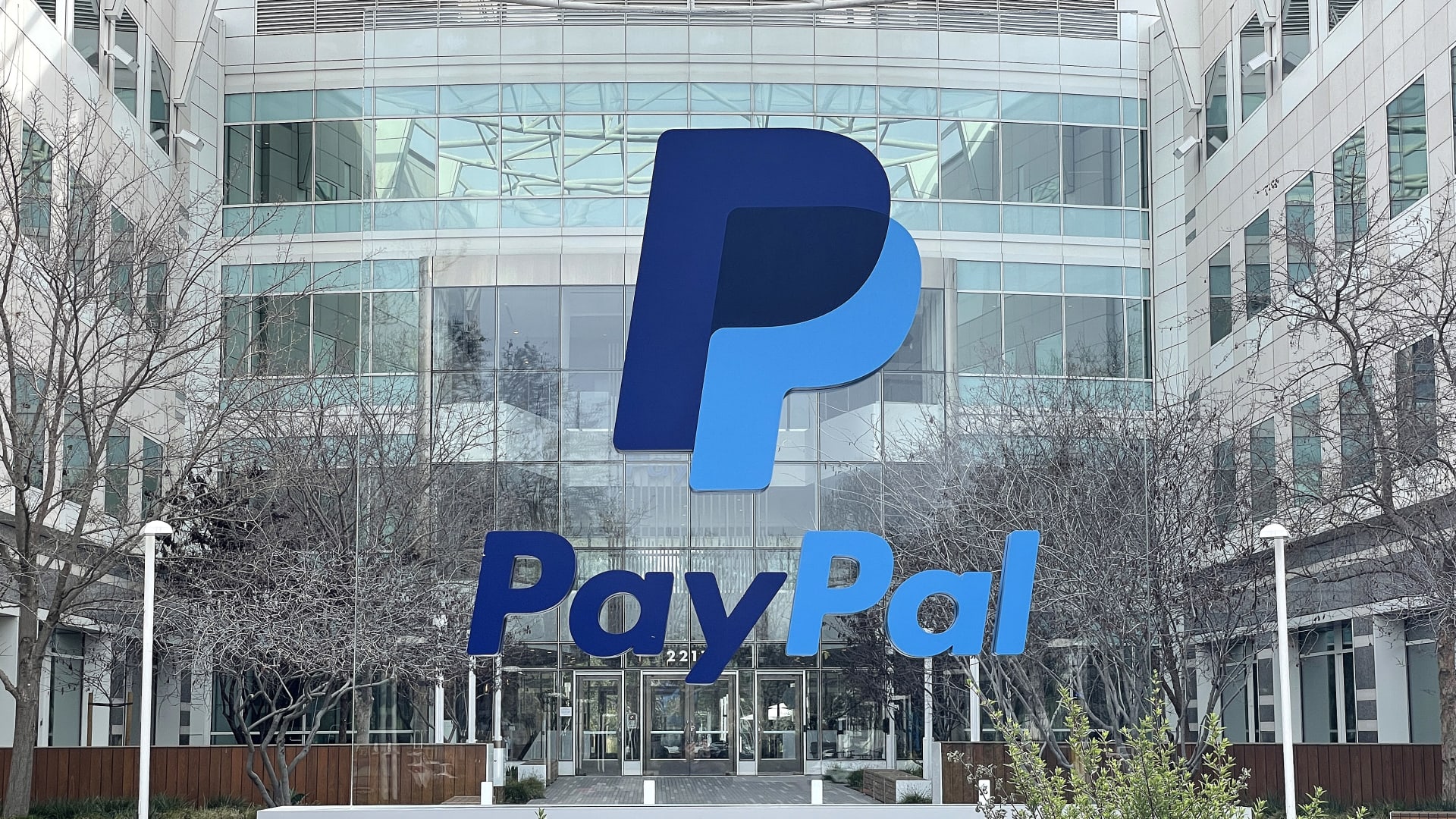PayPal launches first dollar-backed stablecoin from a major U.S. financial institution
2 min read
A sign is posted in front of PayPal headquarters on February 02, 2023 in San Jose, California.
Justin Sullivan | Getty Images
PayPal on Monday launched a U.S. dollar-backed stablecoin to help facilitate payments as its latest addition to its suite of crypto services. It’s the first such move from a major U.S. financial institution.
The new asset, called PayPal USD (PYUSD), was designed to address the “emerging potential” to “transform payments in web3 and digitally native environments.” Its launch comes as market participants await a vote in Congress on a key stablecoin bill, which has just advanced to the House with three other crypto bills for the first time.
PayPal said the stablecoin’s function is to reduce friction for in-experience payments in virtual settings and allowing direct flows to developers. It’s redeemable for dollars and backed by dollar deposits, short-term U.S. Treasurys and similar cash equivalents.
“The shift toward digital currencies requires a stable instrument that is both digitally native and easily connected to fiat currency like the U.S. dollar,” said Dan Schulman, president and CEO of PayPal. “Our commitment to responsible innovation and compliance, and our track record delivering new experiences to our customers, provides the foundation necessary to contribute to the growth of digital payments through PayPal USD.”
PayPal shares rose more than 1% following the news.
PayPal USD is issued by Paxos, which also previously issued the dollar-pegged, Binance-branded stablecoin BUSD. Paxos was ordered by the New York State Department of Financial Services in February to stop issuing BUSD, which marked the beginning of this year’s decline in the stablecoin market cap.
Stablecoins are cryptocurrencies whose prices are pegged to an underlying asset. It’s typically a fiat currency (usually the U.S. dollar), although there are also stablecoins whose prices are pegged to commodities or other financial assets. Although they’re designed to be less volatile than most virtual currencies, they weren’t immune from this year’s regulatory crackdown on crypto, and earlier in the year, the banking crisis.
They’re often used to trade in and out of other cryptocurrencies like bitcoin or ether. Because they don’t enter the traditional financial system, traders can enter and exit positions faster and more cheaply than if they were dealing with fiat currencies like the dollar.






